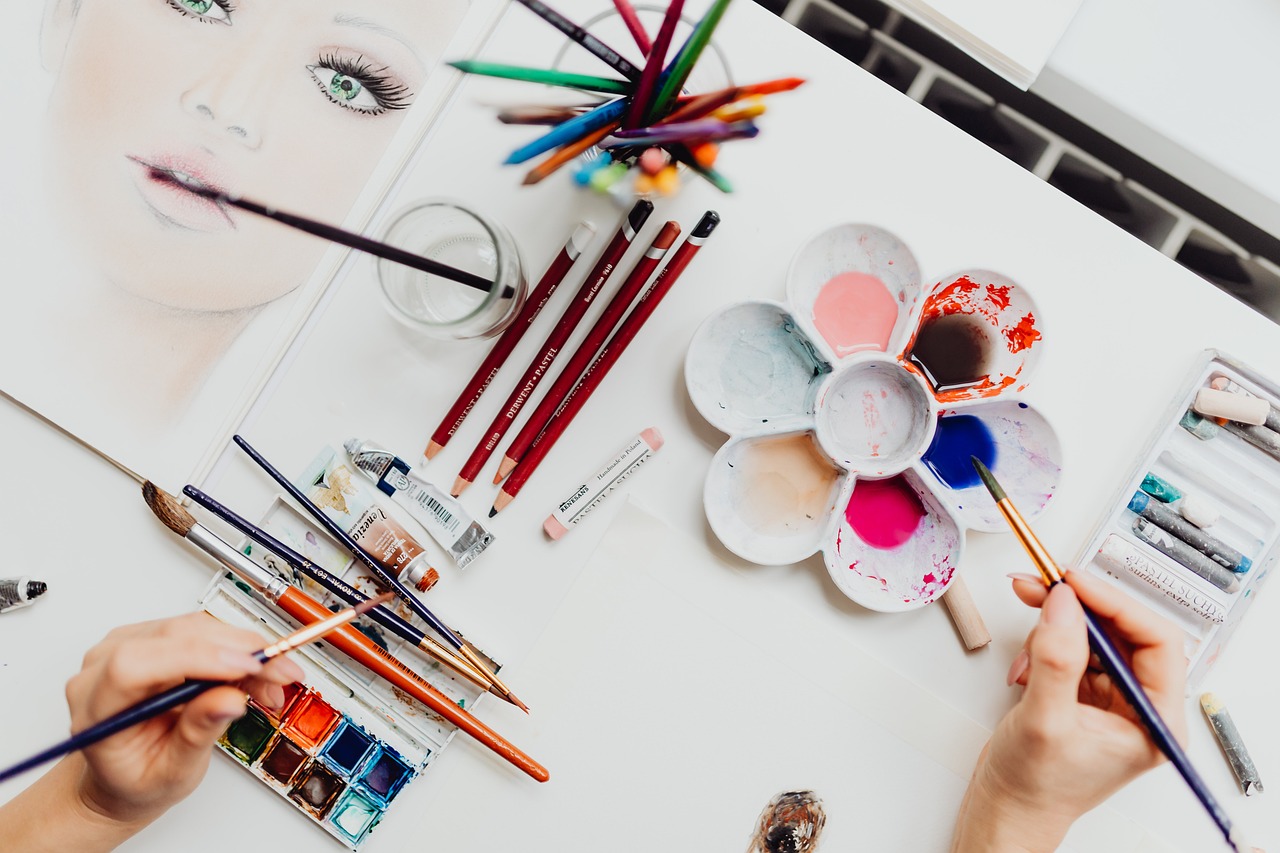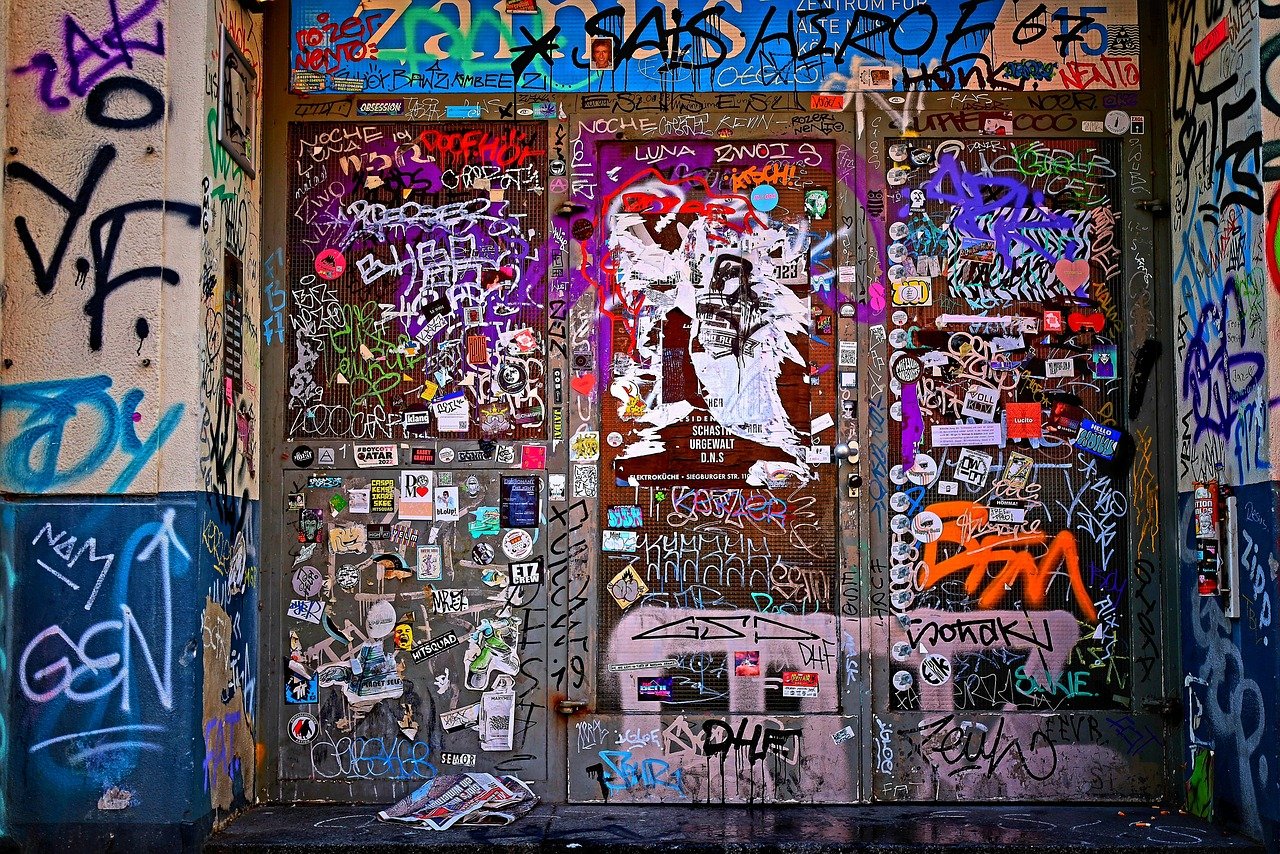How to Make a Living with Art: Tips and Strategies
Are you an artist dreaming of turning your passion into a sustainable career? You're not alone! Many talented individuals are navigating the vibrant yet challenging world of art, hoping to make a living from their creativity. The journey can feel daunting, but with the right tips and strategies, you can transform your artistic endeavors into a thriving business. In this article, we will explore practical steps that will help you not only showcase your talent but also monetize it effectively. Whether you’re a painter, sculptor, digital artist, or any kind of creative, these insights will guide you on your path to success.
Identifying your unique artistic style and niche is crucial for standing out in a crowded market. Think of your niche as the specific corner of the art world where your voice resonates the most. Are you drawn to abstract expressions, realistic portraits, or maybe whimsical illustrations? Discovering and refining your artistic identity is like finding your personal brand. Start by reflecting on what inspires you and the themes that consistently appear in your work. This self-discovery process will not only help you create more authentic art but also make it easier for potential buyers to connect with your work.
In today’s digital age, having a strong online presence is essential for artists. It’s no longer enough to rely on local galleries or art fairs; the world is your canvas! Learn how to effectively showcase your work through various platforms. Social media, personal websites, and online galleries are powerful tools that can help you reach a broader audience. Imagine your art being seen by thousands, or even millions, of people around the globe! To achieve this, focus on creating an engaging portfolio that highlights your best work and tells your unique story.
A well-crafted portfolio is your visual resume. It’s your chance to make a lasting impression on potential clients and galleries. When curating your portfolio, consider the following elements:
- Quality over Quantity: Select only your best pieces that showcase your skills and style.
- Variety: Include a range of work to demonstrate your versatility.
- Professional Presentation: Ensure high-quality images and a clean layout.
Your portfolio should not only display your art but also convey your artistic journey and vision. Think of it as a narrative that invites viewers to engage with your work on a deeper level.
Different platforms serve different audiences. For instance, Instagram is a visual platform perfect for sharing behind-the-scenes content, while websites can serve as comprehensive portfolios and e-commerce stores. We will explore the pros and cons of various online platforms:
| Platform | Pros | Cons |
|---|---|---|
| High engagement, visual focus | Algorithm changes can affect visibility | |
| Personal Website | Full control, professional branding | Requires maintenance and costs |
| Online Galleries | Built-in audience, marketing support | Commission fees, less control over presentation |
Choosing the right platform depends on your goals and the audience you want to reach. Don’t hesitate to experiment with multiple platforms to find the perfect fit for your art.
Social media can be a powerful tool for artists. It’s not just about posting your art; it’s about building a community. Engage with your followers by sharing your creative process, inspirations, and even personal stories. Utilize platforms like Instagram and Facebook to create a connection with your audience. Remember, people love to see the person behind the art! Use hashtags strategically to increase your visibility and attract potential buyers. Think of social media as a vibrant gallery where your art can be viewed and appreciated by many.
Building relationships within the art community is vital for growth. Networking is not just about exchanging business cards; it’s about forming genuine connections. Attend art shows, workshops, and local events to meet other artists, galleries, and potential clients. Consider collaborating with fellow creatives to expand your reach. Remember, every connection can lead to new opportunities. Think of networking as planting seeds in a garden; with time and care, they can grow into fruitful partnerships.
Turning your art into a source of income requires strategic planning. This section covers various methods for monetizing your work, including commissions, sales, and licensing opportunities. It’s essential to explore different avenues to find what works best for you. For instance, consider offering custom pieces for clients or creating prints of your work to sell online. The possibilities are endless, and diversifying your income sources can provide financial stability.
Diversifying your income sources can provide financial stability. Here are some potential revenue streams available to artists:
- Selling original artwork
- Offering prints and merchandise
- Teaching workshops or classes
- Participating in art fairs and exhibitions
By exploring these options, you can create a more robust financial foundation for your art career.
Pricing your artwork appropriately is essential for success. Consider factors such as your skill level, the time invested in each piece, and market demand. Research similar artists to understand pricing trends in your niche. Remember, pricing is not just about covering costs; it’s also about valuing your work. Think of it as a reflection of your artistic journey and the unique experience you offer through your art.
Financial management is crucial for sustaining your art career. It’s not just about making money; it’s about managing it wisely. Start by creating a budget that outlines your income and expenses. Track your sales and expenses meticulously to understand your financial health. Don’t forget to educate yourself about taxes and potential deductions available to artists. Think of financial management as the backbone of your art career; without it, your creative endeavors may struggle to thrive.
Q: How can I find my artistic niche?
A: Start by experimenting with different styles and mediums. Reflect on what inspires you and what themes resonate in your work. Over time, you’ll discover your unique voice.
Q: Do I need a website as an artist?
A: While social media is essential, a personal website serves as a professional portfolio and can enhance your credibility. It allows you to control your branding and showcase your work comprehensively.
Q: How should I price my artwork?
A: Consider your skill level, the time spent, and market trends. Research similar artists and factor in your unique value to set competitive prices.
Q: Is it necessary to network in the art community?
A: Absolutely! Networking opens doors to collaborations, exhibitions, and potential clients. Building relationships is key to growing your art career.

Understanding Your Artistic Niche
Identifying your unique artistic style and niche is crucial for standing out in a crowded market. Think of it as finding your own voice in a world full of chatter. The first step in this journey is introspection. Ask yourself questions like, "What themes resonate with me?" or "What emotions do I want to evoke through my art?" This self-reflection will help you uncover the essence of your artistic identity.
Once you have a clearer understanding of your interests, it’s time to explore various art forms and techniques. Experimentation is key! Whether you’re drawn to painting, sculpture, digital art, or mixed media, allow yourself the freedom to try different styles. This phase is like being a kid in a candy store; you get to taste everything until you find your favorite flavor. Document your creative process and take note of what excites you the most.
As you delve deeper, consider the audience you want to connect with. Who are they? What do they appreciate in art? Understanding your target audience is essential for tailoring your work to meet their preferences. For instance, if you create whimsical illustrations, your niche might be children’s literature or home decor. On the other hand, if your work is more abstract, you could attract collectors or galleries that focus on contemporary art.
To help clarify your niche further, you might find it useful to create a niche statement. This is a brief description that encapsulates your unique style, the themes you explore, and the audience you aim to reach. Here’s a simple example:
"My art combines vibrant colors and surreal landscapes to evoke a sense of wonder, appealing to those who seek joy and escapism."
Once you have your niche statement, it can serve as a guiding star for your artistic journey. It will help you stay focused and make decisions that align with your artistic identity. Remember, your niche can evolve over time, and that’s perfectly okay. The art world is dynamic, and so are you!
Finally, don't underestimate the power of community. Engage with other artists and potential audiences to gain insights into market trends and preferences. Attend workshops, join online forums, or participate in local art shows. These interactions can provide valuable feedback and inspire new directions for your work. In the end, understanding your niche is not just about defining yourself; it's about creating connections that will sustain your artistic career.
- How do I know if I've found my niche? If your work resonates with you and attracts a specific audience, you may have found your niche.
- Can my niche change over time? Absolutely! As you grow as an artist, your interests and audience may evolve, leading to a natural shift in your niche.
- What if I like multiple styles? It's okay to explore various styles. Just ensure that your portfolio reflects a cohesive theme or message.

Building an Online Presence
In today’s fast-paced digital world, establishing a robust online presence is not just an option for artists; it’s a necessity. Think of the internet as a vast gallery where millions of artworks vie for attention. How do you make sure your art doesn’t get lost in the crowd? The answer lies in effectively showcasing your work through various online platforms. By doing so, you can reach a broader audience, connect with potential buyers, and engage with fellow artists.
One of the first steps in building your online presence is creating a personal website. This serves as your digital portfolio, showcasing your best works, biography, and contact information. A well-designed website not only reflects your artistic style but also acts as a central hub where visitors can learn more about you and your art. Consider including the following elements:
- High-Quality Images: Your artwork should be displayed in the best light possible. Invest in good photography or learn how to take stunning photos yourself.
- Artist Statement: Share your story! What inspires you? What themes do you explore in your work? A compelling artist statement can create a deeper connection with your audience.
- Easy Navigation: Make it simple for visitors to find what they are looking for. A clean layout with clear categories can enhance user experience.
But a website alone won't cut it. You must also leverage social media platforms to amplify your reach. Platforms like Instagram and Facebook are particularly powerful for visual artists. These platforms allow you to share your creative process, engage with followers, and promote your work. Here are some tips for utilizing social media effectively:
- Consistency is Key: Post regularly to keep your audience engaged. Whether it’s daily sketches, finished pieces, or behind-the-scenes glimpses, consistent updates will keep your followers coming back for more.
- Engage with Your Audience: Respond to comments, ask for feedback, and create polls. The more you interact, the more invested your followers will become.
- Use Hashtags Wisely: Research and use relevant hashtags to increase visibility. But don’t go overboard—choose a handful that truly represent your work.
Moreover, consider joining online art communities and forums. These platforms can provide valuable networking opportunities, feedback, and even collaboration prospects. By engaging with other artists and art enthusiasts, you not only build connections but also gain insights into industry trends and best practices.
Finally, don’t underestimate the power of online galleries and marketplaces. Websites like Etsy, Saatchi Art, and Artfinder allow you to sell your work directly to buyers. These platforms often come with built-in audiences, which can significantly boost your visibility. However, always remember to maintain your unique voice and style, even when adapting to different platforms.
In summary, building an online presence is about more than just showcasing your art; it’s about creating a vibrant community around your work. By effectively using a combination of your website, social media, and online marketplaces, you can transform your passion into a thriving career. So, are you ready to take the plunge into the digital art world?
Q: How do I choose the right platform for my art?
A: Consider your target audience and the type of art you create. Research different platforms to find one that aligns with your style and goals.
Q: What type of content should I post on social media?
A: Share a mix of your completed works, works in progress, behind-the-scenes content, and engage with your audience through polls and questions.
Q: How often should I update my website?
A: Aim to update your website regularly with new work, exhibitions, or blog posts. This keeps your content fresh and encourages return visits.

Creating an Engaging Portfolio
When it comes to showcasing your artistic prowess, a well-crafted portfolio is like your visual resume—it's often the first impression potential clients and galleries will have of you. But how do you create an engaging portfolio that not only highlights your best work but also tells your unique story? Let's dive into some essential elements that can elevate your portfolio from ordinary to extraordinary.
First and foremost, your portfolio should reflect your unique artistic style. This means curating a selection of pieces that truly represent who you are as an artist. Think of your portfolio as a curated exhibition; every piece should not only stand on its own but also contribute to the overall narrative you want to convey. Choose works that resonate with you and showcase your skills, whether they are paintings, sculptures, or digital art. Remember, quality trumps quantity—it's better to have a smaller selection of outstanding pieces than a larger collection of mediocre work.
Next, consider the layout and presentation of your portfolio. A clean and organized design can make a world of difference. Use high-quality images that accurately represent your work. Blurry or poorly lit photos can detract from the viewer's experience, so invest some time in photographing your pieces properly. Additionally, think about including a brief description or story behind each piece. This not only provides context but also helps the viewer connect with your art on a deeper level.
Another crucial aspect is to keep your audience in mind. Tailor your portfolio to the type of clients or galleries you want to attract. For instance, if you're aiming to work with high-end galleries, your portfolio should reflect that sophistication. On the other hand, if you're targeting a more casual market, a playful and vibrant presentation might be more suitable. Adaptability is key in this ever-evolving art world.
To add some flair, consider including a personal statement or artist bio at the beginning of your portfolio. This is your chance to share your journey, influences, and aspirations as an artist. A well-written bio can captivate your audience and provide them with insight into your creative process. Don’t shy away from revealing your personality—after all, people connect with people, not just art!
Finally, remember that your portfolio is not static. As you grow and evolve as an artist, so should your portfolio. Regularly update it with new works and remove pieces that no longer resonate with your current style. This not only keeps your portfolio fresh but also demonstrates your commitment to your craft.
In summary, creating an engaging portfolio involves a combination of showcasing your best work, maintaining a clean and organized layout, tailoring your presentation to your target audience, and sharing your unique story. By following these guidelines, you'll be well on your way to impressing potential clients and galleries, making your mark in the art world.
- What should I include in my portfolio? Your portfolio should include a selection of your best work, a personal statement or bio, and descriptions for each piece to provide context.
- How often should I update my portfolio? Regularly update your portfolio as you create new works and evolve as an artist. This keeps your portfolio relevant and reflective of your current style.
- Can I have both digital and physical portfolios? Absolutely! Having both allows you to reach a wider audience—digital portfolios are great for online sharing, while physical portfolios can be impressive in face-to-face meetings.

Choosing the Right Platform
When it comes to showcasing your art, selecting the right platform can feel like navigating a maze. Each option has its own unique advantages and challenges, and finding the one that aligns with your artistic vision and goals is key. Think of it like choosing the perfect stage for a performance; the right venue can amplify your message, while the wrong one might leave your audience confused or uninterested.
First, consider what type of art you create. Are you a painter, sculptor, digital artist, or perhaps a photographer? Different platforms cater to different art forms. For instance, Instagram thrives on visual content, making it ideal for photographers and visual artists looking to share their work with a broad audience. On the other hand, Behance is tailored for creative professionals, allowing you to showcase projects in a more detailed manner, which is perfect for graphic designers and illustrators.
Next, think about your target audience. Where do they spend their time online? If your audience is primarily young and trendy, platforms like TikTok or Instagram might be your best bet. However, if you’re looking to connect with art collectors or galleries, platforms like Saatchi Art or Artfinder could be more effective. Each platform has its own community and culture, so understanding these nuances can help you make an informed decision.
Another crucial factor is the level of control you want over your presentation. Some platforms, like Squarespace or Wix, allow you to create a personalized website where you can showcase your portfolio exactly how you envision it. This can be particularly beneficial for artists who want to maintain a strong brand identity. In contrast, social media platforms may limit your customization options but offer greater exposure through their algorithms and sharing capabilities.
To help you visualize your options, here’s a quick comparison table of some popular platforms:
| Platform | Best For | Pros | Cons |
|---|---|---|---|
| Visual Artists | High engagement, visual focus | Algorithm changes, fleeting content | |
| Behance | Creative Professionals | Detailed project presentation | Less social interaction |
| Saatchi Art | Art Collectors | Marketplace for selling | Commission fees |
| Squarespace | Personal Branding | Full control over design | Monthly fees |
Finally, don’t underestimate the power of experimentation. You might start with one platform and find it doesn’t resonate with you or your audience. That’s perfectly okay! Keep an open mind and be willing to pivot as you learn what works best for you. Remember, the ultimate goal is to connect with your audience and showcase your art in a way that feels authentic to you.
- How do I know which platform is best for my art? Consider your art style, target audience, and how much control you want over your presentation.
- Can I use multiple platforms at once? Absolutely! Many artists find success by diversifying their presence across several platforms.
- What if I don’t have a lot of followers? Start by engaging with others in the community, sharing your process, and being consistent. Growth takes time!

Utilizing Social Media Effectively
In a world where social media reigns supreme, artists have a golden opportunity to showcase their work and connect with a global audience like never before. Think of social media as your personal gallery that never closes; it’s accessible 24/7, allowing you to reach potential buyers and art lovers from all corners of the globe. But how do you make the most of this digital landscape? Here are some strategies to help you navigate the vibrant world of social media effectively.
First off, it’s important to choose the right platforms. Not every social media site will resonate with your artistic style or target audience. For instance, Instagram is a visual platform that thrives on stunning imagery, making it perfect for artists. On the other hand, Facebook offers a more extensive format for storytelling and community building. Consider the following when selecting your platforms:
| Platform | Best For | Key Features |
|---|---|---|
| Visual Arts | Photo sharing, Stories, Reels | |
| Community Engagement | Groups, Events, Marketplace | |
| Inspiration & DIY | Pinboards, Visual Discovery | |
| TikTok | Short-Form Videos | Creative Videos, Trends |
Once you've chosen your platforms, it’s time to create content that engages. Don’t just post images of your artwork; tell a story behind each piece. Share your creative process through behind-the-scenes videos or time-lapse recordings, and let your audience in on the journey. This not only humanizes your brand but also fosters a deeper connection with your followers. Engaging content can include:
- Live painting sessions
- Q&A sessions about your art
- Polls to involve your audience in decision-making
Moreover, consistency is key. Establish a posting schedule that keeps your audience engaged without overwhelming them. Aim for a balance that works for you—whether it’s daily posts, a few times a week, or even weekly updates. Utilize tools like Hootsuite or Buffer to plan and schedule your posts in advance, ensuring that your content flows seamlessly.
Engagement goes both ways! Respond to comments, like posts from fellow artists, and participate in conversations within the art community. Building relationships is essential; you never know when a casual interaction could lead to a collaboration or a sale. Consider joining art challenges or hashtags that align with your work to increase visibility and connect with other creatives.
Lastly, don’t forget to analyze your efforts. Most social media platforms offer analytics tools that help you track engagement, reach, and follower demographics. Use this data to refine your strategy. Are certain types of posts performing better than others? Are you reaching the audience you intended? Adjust your content based on these insights to maximize your impact.
By effectively utilizing social media, you can transform your artistic journey into a thriving career. Remember, it’s not just about showcasing your art; it’s about building a community, sharing your passion, and engaging with others who appreciate your creativity. So, roll up your sleeves, get creative, and let the world see what you have to offer!
Q: How often should I post on social media?
A: It depends on your audience and platform, but consistency is crucial. Aim for a regular schedule that you can maintain without sacrificing quality.
Q: Should I use hashtags?
A: Yes! Hashtags can help increase the visibility of your posts. Research popular hashtags in your niche and mix them with unique ones to reach a broader audience.
Q: How do I handle negative comments?
A: Stay professional and calm. If the comment is constructive, thank them for their feedback. If it’s simply negative, it’s often best to ignore it and focus on your supportive followers.

Networking in the Art Community
When it comes to making a living as an artist, one of the most powerful tools at your disposal is the art community itself. Think of networking as the lifeblood of your artistic career; it’s not just about exchanging business cards or connecting on social media. It’s about building genuine relationships that can lead to collaborative opportunities, exhibitions, and even sales. So, how do you dive into this vibrant world and make meaningful connections? Let’s explore some effective strategies.
First and foremost, attending local art events is a fantastic way to meet other artists, curators, and collectors. Whether it's gallery openings, art fairs, or workshops, these gatherings are treasure troves of networking potential. Imagine walking into a room filled with like-minded individuals who share your passion for art—it's electric! Strike up conversations, ask questions about their work, and don’t hesitate to share your own experiences. Remember, everyone is there for the same reason: to connect and celebrate creativity.
Another key strategy is to leverage social media platforms. Instagram and Facebook are not just places to showcase your art; they are also powerful networking tools. By engaging with other artists and art enthusiasts online, you can create a virtual community that supports and promotes each other. Consider joining art groups or forums where you can share your work, receive constructive feedback, and discover collaboration opportunities. Don’t forget to comment on others' posts; a simple compliment can go a long way in building rapport.
Moreover, consider collaborating with other artists on projects. This could be anything from joint exhibitions to co-hosted workshops. Collaborations can introduce you to new audiences and give you the chance to learn from your peers. When you work together, you're not just sharing the workload; you're sharing ideas, techniques, and inspiration. It’s like mixing different colors on a palette to create something entirely new!
Lastly, don’t underestimate the power of mentorship. Finding a mentor in the art community can provide invaluable guidance and insights into navigating your career. A mentor can introduce you to their network, offer feedback on your work, and help you avoid common pitfalls. If you’re unsure how to find one, start by reaching out to artists whose work you admire. It’s all about building that bridge of connection.
To sum it up, networking in the art community is about fostering relationships that can enhance your artistic journey. By attending events, utilizing social media, collaborating, and seeking mentorship, you can create a supportive network that not only inspires you but also opens doors to new opportunities. Remember, the art world is vast, and there’s room for everyone—so go out there and make your mark!
- How can I find local art events? Check community boards, social media, and local art organizations for upcoming events.
- What social media platform is best for artists? Instagram is highly recommended for visual artists due to its image-focused nature.
- How do I approach a potential mentor? Start by engaging with their work, then reach out with a thoughtful message expressing your admiration and interest in learning from them.

Monetizing Your Art
Turning your passion for art into a reliable source of income can feel like navigating a maze, but with the right strategies, it's entirely achievable. The key to lies in understanding the diverse avenues available to you. From selling original pieces to exploring digital formats, the possibilities are as vast as your creativity. Imagine your art as a multi-faceted gemstone; each facet represents a different way to earn income. The more facets you polish, the more valuable your artistic career becomes.
One of the most straightforward ways to monetize your art is through direct sales. This can include selling original works, prints, or even merchandise featuring your designs. Platforms like Etsy, Shopify, and your own website can serve as your storefront, allowing you to reach customers directly. However, it’s crucial to understand your target audience and market your art effectively. Think of it this way: if you were selling lemonade, you wouldn’t just set up a stand and hope for customers; you’d need to make sure people know where to find you and why your lemonade is the best!
Another lucrative option is to take on commissions. Many clients are willing to pay for custom artwork that speaks to their personal tastes or needs. This could range from portraits to specialized pieces for businesses. The beauty of commissions is that they allow you to engage directly with your audience, creating a personal connection that can lead to repeat business. However, managing expectations and setting clear boundaries on your creative process is essential to ensure both you and your clients are satisfied.
Moreover, consider exploring licensing opportunities. Licensing your artwork can open the door to passive income. By allowing companies to use your designs on their products—be it clothing, home decor, or stationery—you can earn royalties without the need to produce and sell each item yourself. This method not only broadens your audience but also elevates your brand recognition. Imagine your artwork being worn or used by people across the globe; it’s a gratifying thought!
Additionally, teaching workshops or offering online courses can be another fantastic way to monetize your skills. Many aspiring artists are eager to learn, and sharing your expertise can be both fulfilling and profitable. Whether it's through local community centers or online platforms like Skillshare or Udemy, you have the opportunity to inspire others while earning an income. Think of it as planting seeds of creativity; as your students grow, so does your reputation and revenue.
When considering how to monetize your art, it’s also essential to think about diversifying your income streams. Relying on a single source can be risky, especially in the fluctuating art market. Here’s a quick overview of various revenue streams you might consider:
| Revenue Stream | Description |
|---|---|
| Original Art Sales | Sell your unique pieces directly to collectors or through galleries. |
| Prints and Merchandise | Offer prints, cards, and other products featuring your artwork. |
| Commissions | Create custom pieces for clients based on their specifications. |
| Licensing | Allow brands to use your art for a fee or royalties. |
| Workshops and Classes | Teach others about your techniques and skills. |
In conclusion, monetizing your art requires a blend of creativity, strategy, and business acumen. By exploring multiple avenues, you can create a sustainable income that not only supports your artistic endeavors but also allows you to thrive in your passion. Remember, the journey may have its ups and downs, but with persistence and innovation, you can transform your artistic dreams into a vibrant reality.
Q: How do I price my artwork?
A: Pricing can depend on factors like your experience, the time spent on the piece, and market demand. Research similar works and consider your costs to find a competitive price.
Q: What platforms should I use to sell my art?
A: Popular platforms include Etsy, Shopify, and your own website. Social media can also be effective for direct sales and building a following.
Q: How can I promote my workshops?
A: Use social media, local community boards, and art forums to spread the word. Offering a free introductory session can also attract participants.

Exploring Different Revenue Streams
When it comes to making a living as an artist, relying on a single source of income can feel like walking a tightrope without a safety net. Instead, diversifying your revenue streams is like building a robust safety net that can catch you when the inevitable ups and downs of the art market occur. So, what are some effective ways to monetize your art? Let's dive into some exciting opportunities that can help you turn your passion into profit.
First off, selling original artwork is the most straightforward approach. Whether you create paintings, sculptures, or digital art, selling your original pieces directly to collectors can yield significant profits. However, this can sometimes be a slow process. To speed things up, consider offering prints of your work. Prints allow you to reach a wider audience without the limitations of original sales, and they can be produced at a fraction of the cost. Platforms like Etsy or your own website can serve as excellent marketplaces for these prints.
Next, let’s talk about commissions. Many artists find success by creating custom pieces for clients. This could be anything from portraits to specialized artwork for businesses. The beauty of commissions is that they often come with a premium price tag, especially if you have a solid reputation. To attract commission work, showcase your previous commissioned pieces in your portfolio, making sure to highlight your versatility and ability to meet client needs.
Another avenue worth exploring is licensing your artwork. This means allowing other companies to use your designs on their products, such as clothing, home decor, or stationery. Licensing can provide a steady stream of passive income, as you earn royalties every time your design is used. However, it’s essential to work with a reputable licensing agent or directly with companies to ensure you’re getting the best deal. Understanding the legalities involved is also crucial, so consult with a professional if necessary.
Moreover, teaching workshops or classes can not only provide income but also build your reputation in the art community. Sharing your knowledge and skills with aspiring artists can be incredibly rewarding. You can conduct workshops in person or even offer online classes through platforms like Skillshare or Udemy. This not only diversifies your income but also allows you to connect with other artists and potential clients.
Finally, consider collaborations with other artists or brands. Collaborations can open doors to new audiences and provide unique opportunities for projects that can be financially rewarding. For instance, teaming up with a local cafe to display your work or creating a limited edition product with another artist can generate buzz and sales.
In summary, the key to successfully monetizing your art lies in exploring various revenue streams. By combining different methods such as selling originals, prints, commissions, licensing, teaching, and collaborations, you can create a sustainable and fulfilling career. Remember, the art world is vast and filled with opportunities; it's all about finding the right fit for you!
- What is the best way to start selling my art? Begin by creating an online portfolio and consider platforms like Etsy or Instagram to showcase your work.
- How do I price my artwork? Research similar artists and consider factors such as materials, time spent, and market demand to set competitive prices.
- Is it necessary to have a business license to sell art? This varies by location; check local regulations to determine if you need a business license or permits.
- How can I find clients for commissions? Network through social media, local art shows, and word-of-mouth to attract potential clients.

Setting Competitive Prices
Pricing your artwork can feel like navigating a minefield. You want to ensure that you’re not undervaluing your talent, yet you also don’t want to scare potential buyers away with exorbitant prices. So, how do you find that sweet spot? First, it’s essential to understand the market and your audience. Research similar artists and see what they charge for comparable works. This will give you a baseline, but remember, your unique style and skill set should also influence your pricing.
Another crucial factor is the cost of materials and time invested in creating each piece. If you spent hours crafting a detailed painting, that effort deserves recognition in your pricing. Consider the following elements when determining your prices:
- Material Costs: Calculate the cost of paints, canvases, and any other materials used.
- Time Investment: Think about how long it took you to create the artwork and assign a reasonable hourly wage.
- Market Demand: If your work is in high demand, you can afford to set higher prices.
- Exhibition Costs: If you are displaying your work in galleries, factor in those costs as well.
Once you have a clearer understanding of these elements, you can create a pricing structure that reflects your artistry and the effort you put into your work. A common approach is to use a formula that combines your material costs and time investment to arrive at a base price. For example, if your materials cost $50 and you spent 10 hours on the piece at $20 per hour, your base price would be:
| Item | Cost |
|---|---|
| Materials | $50 |
| Time (10 hours at $20/hour) | $200 |
| Total Base Price | $250 |
However, don't forget to adjust your prices based on your experience, reputation, and the uniqueness of your work. If you have a strong following or have been featured in reputable galleries, you may be able to charge more than the average artist. Additionally, consider offering different price points for various formats of your work, such as originals, prints, or merchandise. This way, you can cater to a broader audience while still maintaining the integrity of your original pieces.
Finally, be prepared to reassess your prices periodically. As you grow as an artist and your skills improve, it's natural for your pricing to evolve along with your work. Don't hesitate to raise your prices as you gain more experience and recognition in the art world. Remember, setting competitive prices is not just about making a sale; it’s about valuing your art and the hard work that goes into creating it.
Q: How often should I review my prices?
A: It’s a good practice to review your prices at least once a year or whenever you feel your skills or market demand have changed significantly.
Q: Is it okay to offer discounts?
A: Yes, offering occasional discounts or running promotions can attract new customers, but ensure that it doesn’t undermine the perceived value of your work.
Q: Should I charge differently for different formats of my art?
A: Absolutely! Different formats, such as prints versus originals, can have different price points based on demand and cost.

Managing Finances as an Artist
As an artist, navigating the financial landscape can often feel like trying to paint a masterpiece with your eyes closed. You have your creative vision, but how do you ensure that vision translates into a sustainable income? Financial management is not just a dull necessity; it's a vital skill that can empower you to thrive in your artistic career. The key lies in understanding the basics of budgeting, tracking your expenses, and preparing for taxes. Let's dive deeper into these aspects.
First off, budgeting is your best friend. It’s like the canvas where you sketch out your financial future. Start by determining your monthly expenses, including materials, studio rent, utilities, and any other costs associated with your art practice. Once you've established your baseline, you can create a budget that allocates funds for both necessities and luxuries. Consider using budgeting tools or apps that can simplify this process. They can help you visualize where your money is going and where you can cut back if needed.
Next, tracking your expenses is essential. Think of it as keeping a diary of your financial journey. Every paintbrush you buy, every studio rental, and every marketing expense should be recorded. This not only helps you understand your spending habits but also prepares you for tax season. You can use simple spreadsheets or accounting software to keep everything organized. Additionally, maintaining receipts and invoices is crucial. They serve as proof of your expenses and can be vital when filing your taxes.
Speaking of taxes, let’s not shy away from this topic. As an artist, you might be classified as a freelancer or a small business owner, which means you have tax obligations. It's essential to understand your local tax laws and how they apply to your income. Consider setting aside a percentage of your earnings—commonly around 25%—to cover your tax liabilities. This way, when tax season rolls around, you won’t be caught off guard. If finances feel overwhelming, consulting with a tax professional who understands the art world can be a game-changer.
Moreover, let’s talk about financial stability. It’s not just about making money; it’s about creating a safety net for those lean months when sales might dip. This is where diversifying your income sources comes into play. By exploring various revenue streams, such as selling prints, teaching workshops, or even licensing your artwork, you can create a more stable financial foundation. Each stream acts like a brushstroke, contributing to the overall picture of your financial health.
Finally, don't underestimate the power of financial education. Just as you refine your artistic skills, investing time in understanding finance can pay off significantly. There are countless resources available, from books to online courses, that can help you grasp essential financial concepts. By becoming financially literate, you can make informed decisions that will elevate both your art and your career.
- What are the best budgeting tools for artists? There are many options, including apps like Mint, YNAB (You Need A Budget), or even simple spreadsheet templates.
- How do I keep track of my art sales for tax purposes? Maintain a detailed record of all sales, including dates, amounts, and buyer information, alongside your invoices.
- Is it necessary to hire a tax professional? While not mandatory, a tax professional can provide personalized advice and help you navigate complex tax situations.
- What are some ways to diversify my income as an artist? Consider selling prints, offering commissions, teaching art classes, or creating online courses.
Frequently Asked Questions
-
What is the first step to making a living with my art?
The first step is to understand your artistic niche. Identify what makes your art unique and how it fits into the market. This involves discovering your style and refining it to stand out among countless artists. Think of it as finding your voice in a crowded room—once you know what you want to say, it’s easier to be heard!
-
How can I effectively build an online presence?
Building an online presence is all about showcasing your work through various platforms. Start by creating a professional website and utilize social media platforms like Instagram and Facebook to share your art. Engage with your audience regularly and consider using online galleries to reach a broader audience. Remember, your online presence is like your virtual gallery—make it inviting!
-
What should I include in my portfolio?
Your portfolio should be a curated collection of your best work, showcasing your range and style. Include high-quality images, descriptions, and any relevant stories behind the pieces. Think of your portfolio as your artistic resume—make it compelling enough to attract potential clients and galleries!
-
How do I network within the art community?
Networking is all about building relationships. Attend art shows, workshops, and community events to meet other artists and potential clients. Don't be shy—introduce yourself and share your art! Think of networking as planting seeds; the more connections you make, the more your opportunities will grow over time.
-
What are some ways to monetize my art?
There are numerous ways to turn your passion into profit! You can sell original pieces, prints, or even take on commissions. Additionally, consider licensing your artwork or teaching workshops. Diversifying your income streams can provide the financial stability needed to sustain your art career.
-
How do I set competitive prices for my artwork?
Pricing your art can be tricky! Start by researching similar works in your niche and consider your skill level, materials used, and the time spent on each piece. Remember, your prices should reflect both your artistic value and market demand. It’s like finding the sweet spot between what you believe your art is worth and what buyers are willing to pay.
-
What financial management tips do you recommend for artists?
Managing finances is crucial for your art career. Start by creating a budget to track your income and expenses. Keep detailed records, and don’t forget to set aside money for taxes! Think of your finances as the canvas for your career—if you don’t manage it well, your masterpiece may not turn out as planned.



















